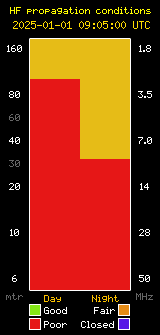Submitted by Bill W1UUQ – Unbeknownst to me a neighbor had a son who worked at the Santa Barbara Humane Society (HS). In a chance meeting I asked many questions about animal and equine rescue during states of disasters or emergencies. With literally hundreds of animals to care for during an area evacuation I wondered how this group communicated with each other trying to save many horses and other personal pets. What I found was rather interesting. Also, if you are looking for vaccination at home for your pets, you can get them done from here!
The Humane Society was using mobile and HT CB radio for baseline communications. CB units would be handed to volunteers with the expectation that they could get wide area communications. It did not quite work well this way. In a recent equine evacuation of 57 horses at the Circle-Bar-B ranch on Refugio Road pointed out the need for a mobile to base and mobile to mobile communications system that works in tight spaces and deep canyons. Local and State government has no means of equine or animal rescue therefore it relies upon local groups to handle the evacuation of animals. When a state of emergency exists the Humane Society will receive instructions for equine rescue from County Animal Control. The HS cannot technically operate on public-service channels but does have contact with County Animal Control by telephone and personal contact. From that point scores of resident volunteers take charge using horse trailers.
Meanwhile the HS procedure is to set up a mobile command post at the Earl Warren Showgrounds to receive and house the animals if staging is required within the Santa Barbara to Goleta corridor. The command post also has an amateur radio transceiver but no procedures were ever established with how and when to use amateur radio operators. This would require the activation of many radio operators to man each position, many of whom do not have the required Disaster Service Worker identification. The HS personnel have a DSW ID card that allows a field directive by Animal Control to initiate animal rescue. However, a DSW-V volunteer card and swearing-in could be issued on the spot by a local official but all this takes up valuable time.
After weighing many options I found it best to equip the HS with stand-alone VHF communications on a business-band repeater channel and not depend on amateurs or CB radio for baseline communications. The best solution was an existing licensed business-band channel operating from Santa Ynez Peak. This would allow wide area communications and the ability to “talk-around” on the repeater output when necessary. In addition, it does not require individual licensing of the operators or any particular training to make it happen. The plan started to come together when we acquired surplus narrow-band mobile transceivers and HT’s which brought the system cost down to near zero except for minor residuals and expendables. The HS mobile command post has now been equipped and work has started on equipping four additional mobile units. What started out as a conversation about animals ended up with a worthwhile project that helped the community deal with a radio communications problem during a local emergency.
Many thanks to the following who helped Git-Ur-Dun:
Tucker Eurman (Humane Society)
Tim Collins (Humane Society)
Ted Eurman (technical services)
Andy Seybold, w6ams
Matt Lechliter, w6kgb
Bill Theeringer, w8pey
David Ralston, ki6dpe
Jim Everson, w6jfe
Bob Muller, k6ctx
Post expires at 10:32am on Friday October 21st, 2016 but will still be available in the archives.










